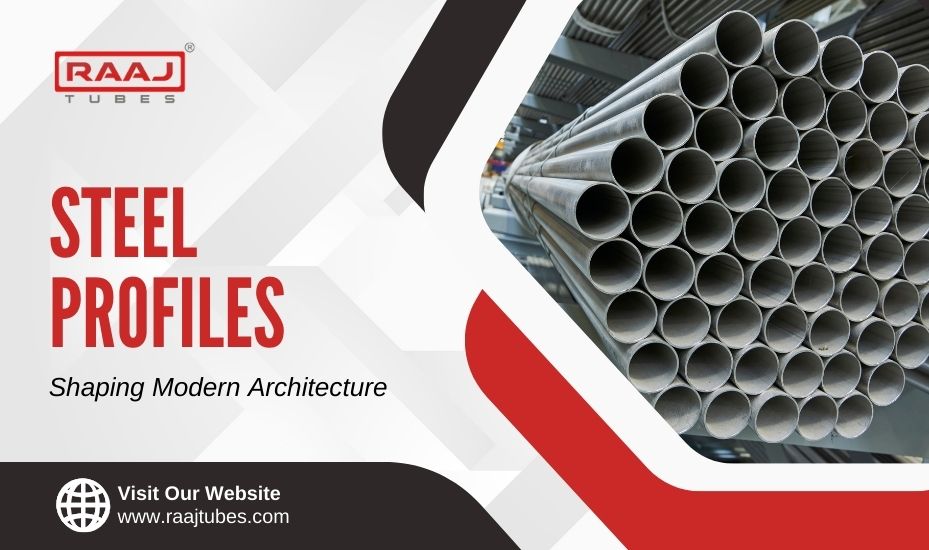In the realm of modern architecture, one material stands tall, quite literally – steel. Its adaptability, strength, and aesthetic appeal make it an indispensable element in shaping contemporary structures. At the heart of this steel-centric construction lie steel profiles, the unsung heroes defining the skeleton of modern edifices.
Steel Profiles’ Role in Modern Architecture
Steel profiles are the quintessential building blocks for architectural wonders, meticulously crafted to cater to diverse structural needs with a variety of shapes and sizes. They are integral to the backbone of modern marvels, from towering skyscrapers to sleek bridges, ensuring safety and integrity through strict adherence to quality standards. Their role in modern architecture is multifaceted:
- Building blocks for architectural wonders: Steel profiles provide the essential framework for buildings, enabling the creation of structures that are not only functional but also iconic.
- Variety in shapes and sizes for different structural needs: The diverse range of steel profiles, from beams to columns, allows for tailored solutions to specific architectural challenges.
- Integral to the backbone of skyscrapers and bridges: Acting as the skeletal structure, steel profiles give rise to the vertical and horizontal expanses of our urban landscape.
- Adherence to quality standards for safety and integrity: Rigorous standards ensure that steel can be trusted to support and secure large-scale constructions.
- Enable adaptability in architectural design: The malleability of steel allows for innovative designs that can adapt to the evolving demands of architecture.
- Provide strength and resilience for longevity: Known for their durability, steel profiling helps buildings withstand environmental stresses over time.
- Contribute to the aesthetic appeal of structures: The sleek and modern appearance of steel profiles enhances the visual impact of architectural designs.
- Offer cost-efficiency in construction: The long-term benefits of using steel, such as reduced maintenance and repair costs, make it a cost-effective material choice.
- Align with sustainable architecture practices: Steel supports green building initiatives due to their recyclability and energy-efficient properties.
Different Types of Steel Profiles
The versatility of steel profiles is indeed boundless, with each shape and form serving a distinct purpose in the grand tapestry of architectural design. Here’s an enriched description incorporating the specified points:
- Stainless Steel Round Tubing: Often used for structural and aesthetic purposes, round tubing is a staple in construction and design, offering both strength and a sleek finish.
- Stainless Steel Square and Rectangular Tubes: These tubes provide the robustness needed for the framework of buildings and are favored for their geometric precision and versatility.
- Stainless Steel Flat Tubes: Flat tubes are unique in their profile and are commonly utilized where a flat surface is required for attachment or aesthetic consistency.
- Stainless Steel Press Brake Tubes: Crafted with precision, press brake tubes are bent to exact angles, providing custom solutions for complex architectural challenges.
- Stainless Steel Profiles: A broad category that includes a range of shapes, each tailored for specific structural roles, from support beams to decorative elements.
- Welded Stainless Steel I-Beams: The quintessential load-bearing profile, I-beams are welded for additional strength and are pivotal in supporting the weight of modern structures.
Steel Profile Standards
In the realm of modern architecture, steel profiles are not just materials; they are the very foundation upon which architectural marvels are built. Raaj Tubes, with its commitment to quality reflected in its ISO 9001:2015, ISO 14001:2015, and ISO 45001:2007 certifications, ensures that its range of steel profiles meets the highest standards of safety and integrity.
Why Steel Profiles for Architecture
Versatility in Design
One of the foremost advantages of steel lies in its adaptability. Whether curvaceous or angular, steel profiles can be molded to suit the most intricate design requirements, empowering architects to push the boundaries of creativity.
Durability & Strength
In a world where longevity is paramount. Steel inherents strength and resilience that make it the preferred choice for projects requiring structural robustness, withstanding the test of time and nature’s elements.
Aesthetic Appeal
Beyond their utilitarian function, steel profiles exude a distinct aesthetic charm. Their sleek lines and modern allure contribute to the visual appeal of architectural masterpieces, elevating them from mere structures to timeless works of art.
Cost-Efficiency
While quality is non-negotiable, cost-effectiveness remains a key consideration in architectural endeavors. Steel offers a compelling balance of affordability and performance, optimizing resource allocation without compromising on excellence.
Sustainability
In an era marked by environmental consciousness, sustainability takes center stage. Steel profiles, with their recyclability and eco-friendly attributes, align seamlessly with the ethos of sustainable architecture, paving the way for a greener future.
Final Words
In the ever-evolving landscape of modern architecture, steel profiles stand as stalwart companions, guiding the trajectory of innovation and progress. As architects continue to push boundaries and reimagine the possibilities of design, steel will remain steadfast, shaping the skylines of tomorrow with unwavering strength and grace.
